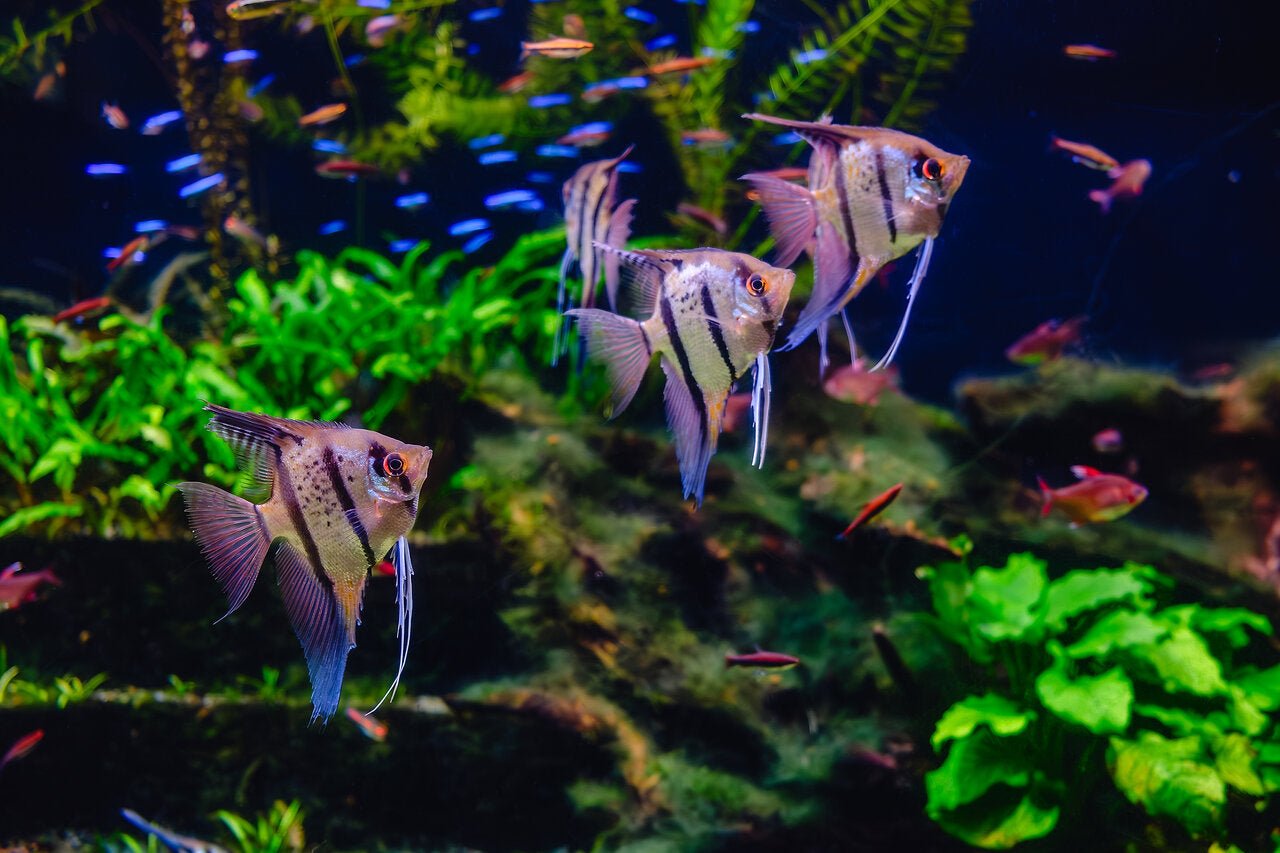The art of aquascaping goes beyond simply decorating your aquarium; it is a creative journey that involves designing a beautiful and functional underwater landscape that harmoniously accommodates the diverse needs of your aquatic inhabitants. Mastering the principles of aquascaping will allow you to transform your aquatic environment into a stunning piece of living art, providing a captivating and engaging habitat for your fish, invertebrates, and aquatic plant life. At Perfect Aquatics, one of the UK's largest aquatics specialists, we take great pride in guiding and inspiring aquarists like you throughout this creative process, offering our wealth of knowledge, best-in-class aquascaping materials, and our shared passion for the captivating world of underwater landscapes.
In this comprehensive guide, we will explore the foundational principles of aquascaping, delve into the fascinating styles that have captivated aquarists across the globe, and provide a step-by-step guide to designing, building, and maintaining a breathtaking aquascape tailored to your unique preferences and requirements. With our expert guidance, customised solutions, and innovative aquascaping products, you will be well-equipped to turn your vision into reality, creating a captivating underwater world that both you and your aquatic pets can enjoy day after day.
Join us, as we journey into the mesmerising realm of aquascaping, where art and nature seamlessly intertwine, evoking a sense of tranquillity, balance, and wonder in the hearts of all who experience it.
Creating a Beautiful and Functional Aquascape: Principles, Styles, and Step-by-Step Guide
Fundamental Principles of Aquascaping: Balance, Focal Points, and Layout Techniques
Develop a strong foundation in aquascaping by understanding its essential principles, which will guide your design choices and ensure a visually pleasing outcome:
- Balance: Achieving balance in your aquascape means arranging your elements, such as rocks, driftwood, and plants, in a harmonious and visually appealing manner. Strive for unity and cohesion, avoiding overcrowded or empty spaces.
- Focal Points: Create focal points to draw the eye and add interest to your aquascape. Strategic placement of bold hardscape elements or eye-catching plants can generate visual impact and contribute to a captivating design.
- Layout Techniques: Implement layout techniques, such as the Golden Ratio or the Rule of Thirds, to generate a sense of balance and proportion in your aquascape. These techniques provide a guideline for the placement and arrangement of your design elements.
Aquascaping Styles: Nature Aquarium, Dutch, Iwagumi, and More
Explore popular aquascaping styles that will inspire your creativity and help you to define your unique design vision:
- Nature Aquarium: The Nature Aquarium style, pioneered by Takashi Amano, emphasises the harmonious integration of plants, stones, and driftwood into a natural-looking underwater landscape. This style often features dense aquatic plant growth, mimicking a serene, forest-like environment.
- Dutch Aquascape: The Dutch Aquascape style focuses on the arrangement and variety of aquatic plants, with less emphasis on hardscape elements. To create a Dutch aquascape, use distinct plant species of varying colour, texture, and height, arranged in visually appealing groupings.
- Iwagumi Aquascape: The Iwagumi Aquascape style primarily features rocks as the main design element, creating a minimalist and balanced composition. Typically consisting of an odd number of stones, the Iwagumi layout often incorporates low-growing foreground plants to accentuate the rock formations.
- Biotope Aquascape: A biotope aquascape replicates a specific natural habitat and its native aquatic species, prioritising the faithful recreation of a particular environment. To create a biotope aquascape, research the flora, fauna, and water parameters of your chosen habitat, and select suitable plants, fish, and hardscape materials to reflect it.
Designing and Building Your Aquascape: A Step-by-Step Guide
Follow this step-by-step guide to bring your aquascaping vision to life, creating a stunning and functional underwater environment:
- Plan Your Layout: Begin by sketching out your desired layout, considering the principles of balance, focal points, and layout techniques. Think about the styles that inspire you and choose a design direction that resonates with you personally.
- Choose Your Hardscape Elements: Select hardscape materials, such as rocks, driftwood, or other structures, that complement your chosen style and design vision. Ensure that the materials are aquarium-safe and properly cleaned before adding them to your tank.
- Prepare and Place Your Hardscape: Rinse and soak your hardscape materials as necessary to remove any impurities. Arrange them in your aquarium according to your plan, considering how the hardscape will interact with and support your plants.
- Select and Introduce Aquatic Plants: Choose a variety of aquarium plants that suit your chosen style and design vision, ensuring a mix of foreground, midground, and background plants to create visual depth. Consider lighting and nutrient requirements to ensure the health and growth of your plants.
- Add Substrate and Water: Introduce your chosen substrate, such as gravel or aquatic soil, to provide a firm foundation for your plants and hardscape elements. Gradually fill your aquarium with water, taking care not to disturb your carefully arranged aquascape.
- Monitor and Maintain Your Aquascape: Regularly monitor your aquascape's water parameters, plant growth, and overall health. Perform routine maintenance tasks, such as water changes, trimming plants, and cleaning the substrate, to keep your aquascape looking its best.
Conclusion
Delving into the captivating world of aquascaping opens up a realm of creative possibilities, allowing you to design and build stunning underwater landscapes that provide a beautiful and functional habitat for your aquarium inhabitants. By mastering the principles of aquascaping, experimenting with various styles, and following a step-by-step guide to bring your vision to life, you can transform your aquatic environment into an awe-inspiring masterpiece that resonates with your unique passion and creativity.
Allow Perfect Aquatics to support you on your aquascaping journey, providing expert guidance, a diverse range of aquascaping materials for your fish tank, and a commitment to fostering the shared love of underwater artistry.
